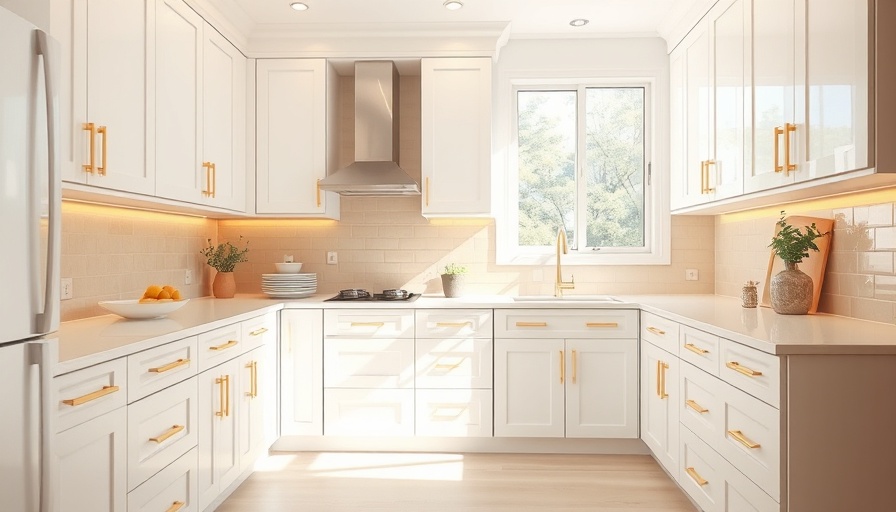
Revitalize Your Space: Mastering the Art of Laminate Cabinet Refacing
For homeowners, the kitchen often serves as the heart of the home—a gathering place for family meals and entertaining friends. Over time, however, cabinets can lose their luster and practicality. For those looking to refresh their kitchens without embarking on a full-scale remodel, refacing laminate cabinets presents an attractive solution. But how does this process work, and what should you know before diving in?
What Is Laminated Cabinet Refacing?
Cabinet refacing involves the process of applying new veneer or laminate surfaces to existing cabinet boxes, thereby upgrading the aesthetic without the hassle of total replacement. This method not only saves homeowners time and money but also provides a plethora of design choices—from colors to textures, allowing for extensive customization.
Why Choose Refacing Over Replacement?
Refacing laminate cabinets often costs 30% to 50% less than full cabinet replacement while maintaining the kitchen's existing layout. This presents a significant advantage for homeowners seeking both beauty and functionality without the upheaval of a renovation. Conventional replacements can be time-consuming, taking weeks, while refacing can be accomplished in as little as 3-5 days. This rapid transformation means less disruption to your home life, particularly for growing families or busy professionals.
Cost Considerations and Planning
The cost of cabinet refacing varies depending on the size of your kitchen and the materials chosen. Homeowners may find that DIY refacing can cost between $1,000 and $4,000, while hiring professionals might bring costs ranging from $4,500 to $13,000. Understanding these costs is crucial for budgeting. Moreover, if you're considering this upgrade, you want to ensure that the underlying cabinet structures are in good condition, which will ultimately dictate the viability of refacing instead of replacing.
Step-by-Step Refacing Process
The refacing process can seem daunting but is manageable with the right approach. Here’s a brief overview of the steps involved:
- Remove Existing Hardware: Begin by taking off cabinet doors and drawer fronts, as well as the associated hardware.
- Surface Preparation: Clean the cabinet surfaces thoroughly to ensure proper adhesion of the new veneer.
- Apply Veneer: Using adhesive, apply the new laminate surfaces to the cabinet boxes, taking care to align them correctly.
- Replace Doors: Install new doors that match the updated cabinet appearance, providing a cohesive look.
- Install Hardware: Finally, add new knobs and handles to complete the transformation.
Eco-Friendly Benefits of Refacing
Refacing also offers an environmentally responsible route for home improvements. By utilizing existing structures and materials, homeowners can significantly reduce waste and the carbon footprint associated with disposing of old cabinets. This aligns well with a growing emphasis on sustainability in home design, making refacing a smart choice for eco-conscious consumers.
Future Proofing Your Kitchen
What does the future hold for kitchen renovation trends? As homeowners increasingly lean towards sustainable practices in home improvement, the demand for cost-effective and eco-friendly solutions like cabinet refacing is likely to rise. With innovative finishes and materials, the options for refaced cabinets can create modern, chic aesthetics that are not only stylish but also practical for everyday use.
Final Thoughts on Laminate Cabinet Refacing
Refacing laminate cabinets is a straightforward yet impactful way to breathe new life into your kitchen. With rapid results, customizable options, and a lower price point than replacements, it stands as a viable choice for many homeowners. If you're ready to embrace change, consider consulting with local home improvement professionals about this transformative service.
Ready to upgrade your kitchen beautifully and affordably? Explore Kitchen Saver's services for a fresh new look!
 Add Row
Add Row  Add
Add 




 Add Row
Add Row  Add
Add 

Write A Comment